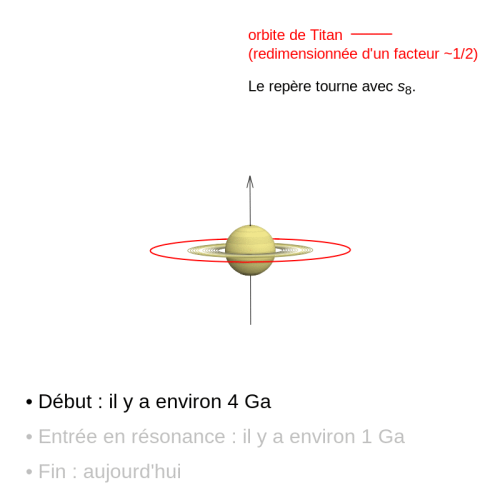A bit like David against the giant Goliath, the satellites of Saturn would be responsible for the rocking of the giant planet. Indeed, recent work carried out by scientists from CNRS, Sorbonne University and the University of Pisa show that the current inclination of Saturn’s rotation axis is the result of the migration of its satellites, and more particularly of the largest of them, Titan.

Recent observations have shown that Titan and the other satellites are gradually moving away from Saturn much faster than astronomers had previously estimated. By integrating this increased migration speed into their calculations, the researchers concluded that this phenomenon affects the tilt of Saturn’s axis: as its satellites move away, the planet tilts more and more.
The determining event in Saturn’s tilt would have taken place relatively recently. For more than three billion years after its formation, Saturn has maintained a slightly inclined axis of rotation. It is only about a billion years ago that the slow action of its satellites would have caused a resonance phenomenon that persists today: by interacting with the course of the planet Neptune, the axis of Saturn began its long tilt to the inclination of 27° observed today.
These results call into question the scenario established so far. Astronomers already agreed on the existence of this resonance but they thought that it had occurred very early, more than four billion years ago, due to a modification in the orbit of Neptune. Since then, the axis of Saturn was thought to be stabilized. In reality, the axis of Saturn is still tilting, and we observe today only a transitory stage of this evolution. In the next billions of years, the inclination of Saturn’s axis could more than double.
The research team had already reached similar conclusions about the planet Jupiter. This planet should undergo a similar tilting due to the migration of its four main satellites and a resonance with the orbit of Uranus: in the next five billion years, the inclination of the axis of Jupiter could then pass from 3° to more than 30°.
Schematic animation

Click on the image above to see the animation.
Bibliography
The large obliquity of Saturn explained by the fast migration of Titan. Melaine Saillenfest, Giacomo Lari et Gwenaël Boué. Nature Astronomy, le 18 janvier 2021
Last update on 12 January 2022








